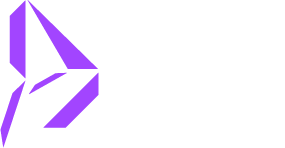Turning Pink into Gold: The Barbie Marketing Playbook
In 2023, Barbie the Movie culminated into an unstoppable force and cultural event. With Greta Gerwig at the helm and Warner Bros. leading a marketing campaign as bold as Barbie herself, the film transformed into a global phenomenon dripping with nostalgia, creativity and a fearless strategy that has come to redefine what a blockbuster campaign can achieve.
A Carefully Crafted Frenzy
The journey began in 2022 with a single image: Margot Robbie as Barbie, perched in her signature pink Corvette. This small glimpse created instant excitement, hinting at a vibrant spirit while sparking conversations that grew louder as the release approached.
Warner Bros. expertly navigated the zeitgeist, feeding into the “Barbiecore” trend—a pink, playful aesthetic sweeping multiple touchpoints and reference points across contemporary trends in fashion, design and music. By the time the film finally made its debut, Barbie had transcended her role as a movie character, becoming a cultural touchstone and a symbol of a specific moment in time.
The Winning Playbook
Unexpected Collaborations:
Barbie cleverly unleashed a barrage of mainstream and niche partnerships, creating touchpoints for audiences that might not typically overlap and connections with both loyal fans and those outside its traditional demographic. The intent being that whether or not consumers went to see the movie, they would encounter at least one of its over 100 collaborations.
From a Balmain Barbiecore hoodie collection priced around $1,300 (with matching pink shorts and accessories) to quirky partnerships like Barbie-themed Crocs, the collaborations were surprising and perfectly aligned with the brand’s playful vibe.
Even Xbox underwent a makeover, enticingly promising to 'bring her fashion-forward genius to your gaming setup' with a dazzling fuchsia console.
Each partnership maintained a fresh feel, drawing audiences into the Barbie world with an irresistible flair, and infectiously inspiring nearly every unofficial brand partner to join the trend with shameless or covert Baricore references.
Indeed, when advertising agency An-yal created a Limed Edition Kenta ('Ken') for the DORCO shaving brand's Japanese market, the hyper-masculine world of men's shaving implements also found an angle.
Immersive Experiences:
What’s more Barbie than the Malibu Dreamhouse? Warner Bros. brought it to life, listing the mansion on Airbnb and decking it out with iconic details, from a waterslide to Ken’s cowboy gear. Elsewhere, fans could board a Barbie boat cruise or explore pop-ups that recreated her world. These real-life touches offered more than photo ops—they gave audiences a slice of the dream.
Social Media Magic:
TikTok turned into a pink playground as fans shared outfits, makeup looks, and memes. Warner Bros. amplified the buzz with a Barbie Selfie Generator that flooded timelines. Then Barbenheimer, a viral trend that paired Barbie with Oppenheimer for double-feature screenings, emerged. This unplanned phenomenon added an extra layer of excitement to an already unstoppable campaign.
A Marketing Powerhouse
The results were staggering:
Opening weekend saw $165 million in domestic box office sales and $337 million globally, setting records across the board.
The demand for pink paint surged so dramatically that manufacturers reported shortages worldwide.
Mattel experienced a major boost in Barbie doll sales, cementing her status as an icon for new generations.
A Shortage of Pink Paint
Among the campaign’s many surprising outcomes, one stood out for its sheer symbolism: a global pink paint shortage. The film's set design, which leaned heavily on vibrant shades of pink to recreate Barbie’s world, was so extensive that it caused a significant dent in the global supply of Rosco paint.
In an interview, the film’s production designer, Sarah Greenwood, shared how the construction of Barbie Land, with its dreamlike hues, required unprecedented amounts of pink. Everything also needed to be pink. Construction caused an international run on the fluorescent shade of Rosco paint. “The world,” she laughed, “ran out of pink.”
Also, director Greta Gerwig added that “maintaining the ‘kid-ness’ was paramount. “I wanted the pinks to be very bright, and everything to be almost too much.” In other words, she didn’t want to “forget what made me love Barbie when I was a little girl.”
As the campaign gained momentum, fans and brands alike joined the Barbiecore trend, embracing the playful pink aesthetic in everything from fashion to decor. The soaring demand for all things pink created an unexpected global buzz, turning a color into an icon. The pink paint shortage was a testament to how deeply the campaign resonated with audiences and how far its influence stretched beyond the screen.
What Made It Work
In short, the campaign succeeded because it wasn’t just about selling tickets—it was about creating a shared experience. By blending nostalgia with innovation and delivering surprises at every turn, Warner Bros. reached beyond Barbie fans to captivate skeptics and newcomers alike.
Its tagline captured the essence perfectly: “If you love Barbie, if you hate Barbie, this movie is for you.” It welcomed everyone into the conversation and showcased how excellent marketing is also about creating a world that people want to explore.
The Barbie campaign felt like a breath of fresh air, proving that fun and a touch of audacity can make marketing both impactful and unforgettable.
Based in Tokyo, An-yal is the leading independent advertising agency for lifestyle brands. Contact us to get ahead with your advertising, marketing and creative needs.








